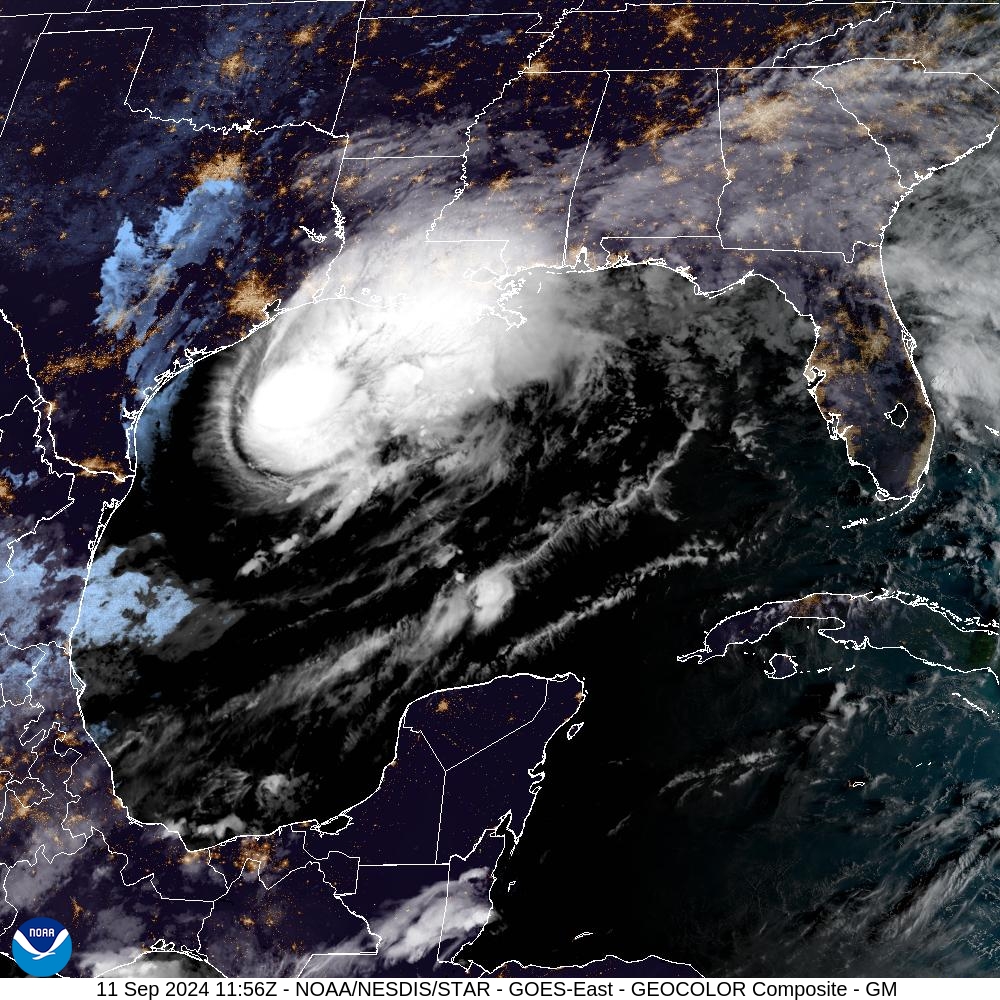The following guest post from humanities scholar Katie Livingston is part of our Vanishing Culture series, highlighting the power and importance of preservation in our digital age.

My Grann’s edition of The Grady County Extension Homemaker Council’s cookbook Down Home Cookin’ is missing its front and back cover. Once made of thin, flimsy pieces of plastic decorated with an old barn and windmill, the cover has long since fallen off and some of the pages are loose. The book is held together by three red rubber bands. My Grann explains that the plastic binder got brittle and began to fall apart—the rubber bands are her solution. The pages of the cookbook are yellowed from years of use. At least three generations of women in my family, including myself, have flipped through these pages, leaving them stained with the oils from their fingers and the drippings of in-progress recipes. Most importantly to me, they scribbled in the margins. My family’s edition of Down Home Cookin’ has reached a critical mass of notes in the marginalia such that it no longer counts as a simple copy of a cookbook: it is my Grann’s cookbook, our family cookbook. Holding it in my hands in my apartment in California (my Grann kindly agreed to mail it to me) feels off. It feels so delicate here, out of the context of her home, her kitchen, in the little cupboard where she has kept all of her cookbooks since I was a child. Now, it is more like a museum piece, something precious and precarious, meant to be handled with care, preserved, analyzed.
This sense of its history, of its fragility, of its potential for disintegrating, is why the cookbook is worth preserving, worth reading, worth moving from that little kitchen in Apache, Oklahoma, to my little kitchen in the Bay Area, to this page, to the archive. This is why all family cookbooks are worth preserving. As time presses on, this small print county cookbook, and others like it, are becoming pieces of personal family ephemera, fading into obscurity the way that other domestic objects—bills, receipts, manuals, phone books, baby books, children’s drawings, to do lists—do. Time has worked on this cookbook as my grandmother has worked from it. The pages are thin, brittle, and covered in age spots. I can imagine all the printed copies of Down Home Cookin’ tucked away in the kitchen drawers of Oklahoma women, slowly degrading, either through excessive use or mere forgetfulness.
Finding a replacement for these books is not easy. To procure a new copy, you have to mail in the old-fashioned way: to an address printed on the title page. This is the paradox of Down Home Cookin’: to obtain a copy of Down Home Cookin’, one must already have a copy of Down Home Cookin’. If one turns to the internet for permanence and reproduction,as we are apt to do these days, little can be found. Searching now reveals a few used editions floating around on eBay and one on Amazon. Unsurprisingly, the Amazon copy is marked with notes and stains. The seller writes: “pencil writing inside front cover, black marker writing on upper corner front cover written ‘(pie crust p.367’), diagonal crease on bottom back cover, and a couple of yellowed (grease?) stains on bottom of a few pages.”

If these books are not scanned, digitized, and archived, we lose not only the text of Down Home Cookin’, but also the contributed labor and knowledge of the women who owned them. Clearly, the owner of the Amazon iteration was fond of the pie crust on page 367. In another version for sale on eBay, the owner inscribed the cookbook with “C Cake” and “Caret Cake” in two locations, presumably as a reminder that this particular cookbook had her favorite carrot cake recipe.
Digitizing and archiving cookbooks challenges the assumption that a scanned book is nothing more than a poor replacement for an official ebook, something easily bought and immediately downloaded, read on a Kindle or an iPad. Scanning and archiving cookbooks documents not only their content, but also the hands that they have passed through; each copy has its own unique revisions and adjustments. Take, for instance, the annotations in the Internet Archive’s scan of A Selection of Tested Recipes, a community cookbook from Howe, Indiana. Not only does the scan capture handwritten addendums to recipes, but also pages in which the owner has added her own recipes. In an unused copy of this cookbook, these pages would otherwise be left blank. But the process of scanning and archiving these previously owned objects quite literally allows us to see the hand of the homemaker at work.
That history is not visible for the cookbook’s digital analog: the recipe blog, perhaps the most ubiquitous means of publishing and accessing recipes today. Blogs offer little in terms of permanency and even less in terms of making the labor of recipe development visible. Though many of us have been raised on the popular phrase, “the internet is forever,” recipe blogs frequently disappear from the internet. Their content is perhaps even more precarious than that of the physical cookbook, no matter how obscure. Even more troublesome: edits, revisions, addendums and the work of recipe formation are not made evident in the form of the recipe blog. Edits become invisible, embedded in the revision history of the backend of a WordPress document rather than made visible to the naked eye.
“In the case of my Grann’s cookbook, her work and trial and error are evident. The recipe takes on the feeling of a living document.”
Katie Livingston, humanities scholar
In the case of my Grann’s cookbook, her work and trial and error are evident. The recipe takes on the feeling of a living document. Her cookbook is filled to the brim with her own clippings from news articles, her addendums, chicken scratch indicating revisions of revisions, photocopies of her mother’s recipe cards, and even her assessments of various recipes (“good,” she says in the margins of the Farmer’s Haystack Pie recipe, “not great”).
The cookbook, especially the community-made cookbook, does not just represent the labor and meaning-making of a single home or a single family; it acts as a tool to bind together and co-create the identities of small groups and sub-communities. While the Better Homes and Gardens Cookbook has worked as a tool for nation-making (my Grann, along with thousands of other teenage girls her age, worked off that cookbook in home economics class), Down Home Cookin’ is representative of a regionally specific co-created identity of women and homemakers in Grady County, Oklahoma. As the political scientist Kennan Ferguson puts it in Cookbook Politics:
These [community] cookbooks emphasize the material, the gustatory, the domestic, and the creative; they do so in order to regularize, communicate with, form, and inspire the women who are their presumed readers. In other words, they intensify. By being written, collected, sold, and passed from hand to hand, they make both the sense of belonging and the sense of community more intense (79).
The Grady County Extension Homemakers are not ignorant to the fact of their cookbook as a tool for community building and the “intensification” of certain values and goals. The book is very clearly inscribed with its intent: to help women “gain knowledge and improve their skills in home economics and related areas so that the family unit may be strengthened, develop leadership skills, provide community service, promote international understanding, and meet new people” (454). There is even a charge that members are “friendly, helpful, full of ideas, eager to learn and believe in the home” (454).
“Preservation allows us to be critical and precise in our critiques of communal identity formation. It is not the case that all ideologies baked into the cookbook are ubiquitously good.”
Katie Livingston
Preservation allows us to be critical and precise in our critiques of communal identity formation. It is not the case that all ideologies baked into the cookbook are ubiquitously good. Ferguson touches on how many community cookbooks seem to “reinscribe the virtues of caretaking, housework, even domestic obeisance for both the book’s audience and for the authors themselves” (79). What can, on the one hand, be read as veneration for the homemaker and her work, on the other hand can also be read as a re-inscription of traditional gender roles, the gendered division of labor, and even a certain kind of nationalism through the production and maintenance of the suburban nuclear family.
Cookbooks are not only concerned with the domestic, the familiar, and the communal, but also with the Other, the foreign, and the unknown. There is an impulse, at least in the American cookbook, to bring “otherness” into the home and domesticate it for one’s own use, enjoyment, and consumption. It seems no mistake to me that the Grady Homemaker’s Extension Council promotes “international acceptance” alongside reinforcing the home, or that the 90s edition of the Better Homes and Gardens New Cookbook seeks to include “more ethnic and regional favorites, such as stir-fries and gumbos, instead of standard meat and potato fare” (4). My Grann’s cookbook contains the sections “Mexican” and “International” as a means of diversifying the offerings. And while the results are humorous (some of my favorites from this section include “Hong Kong Chicken Casserole,” in which cream of mushroom soup is a key ingredient, and “Mexican Spaghetti Casserole”), one can’t help but wonder what their inclusion means in the context of the whole.

While these versions of taking the foreign into the domestic can be read as a good-faith effort to seek understanding and acceptance, older cookbooks take on a more voyeuristic, exploitative tone. Otherness is a popular theme in the Internet Archives’ most viewed cookbooks. Alongside the comforting title, Things Mother Used to Make” you’ll also find Southern recipe cookbooks with Mammy figures on the cover and Chinese cookbooks whose contents offer little more than several variations on “chop suey.” If we lose these cookbooks, we risk erasing legacies of racism and culinary appropriation that proliferated throughout the twentieth century. Preservation, then, is not only about venerating our cultures and communities, but also understanding our past and present and turning a critical gaze on them when necessary.
What we preserve says a lot about what we value, what we want to bring with us in the future, and what we want to leave behind (for example, I could do without a recipe for Vienna sausages rolled in barbeque sauce and crushed Fritos). The humble cookbook may at first appear an inconsequential tool of everyday home life, but in it, one can read shifting ideologies, values, and tastes. A cookbook can make clear, through a simple collection of recipes, what a community is and isn’t, and what people seek to take into themselves and what they exclude. The pages of a cookbook can reveal the history of an individual, a family, a community, or a nation. It can make evident work that is often otherwise invisible or discarded. Most importantly, it can make you say (as Judie Fitch puts it in praise of her own recipe for Brisket Marinade): “This is really good.”

About the author
Katie Livingston is an English PhD candidate at Stanford University. With a focus on American literature from 1840-1940, Katie researches class mobility in the novel, women’s literature, and local color/regionalist fiction.
When she isn’t immersed in writing or teaching, Katie enjoys exploring the outdoors as a backpacker, hiker, and climber. She also finds joy in baking cakes, indulging in campy horror films, and spending time with her cat, Loaf.












/https://static.texastribune.org/media/files/2870eb33f701bd8b6342ca8baf293840/0624%20Capitol-Austin%20File%20OA%20TT%2029.jpg)



















